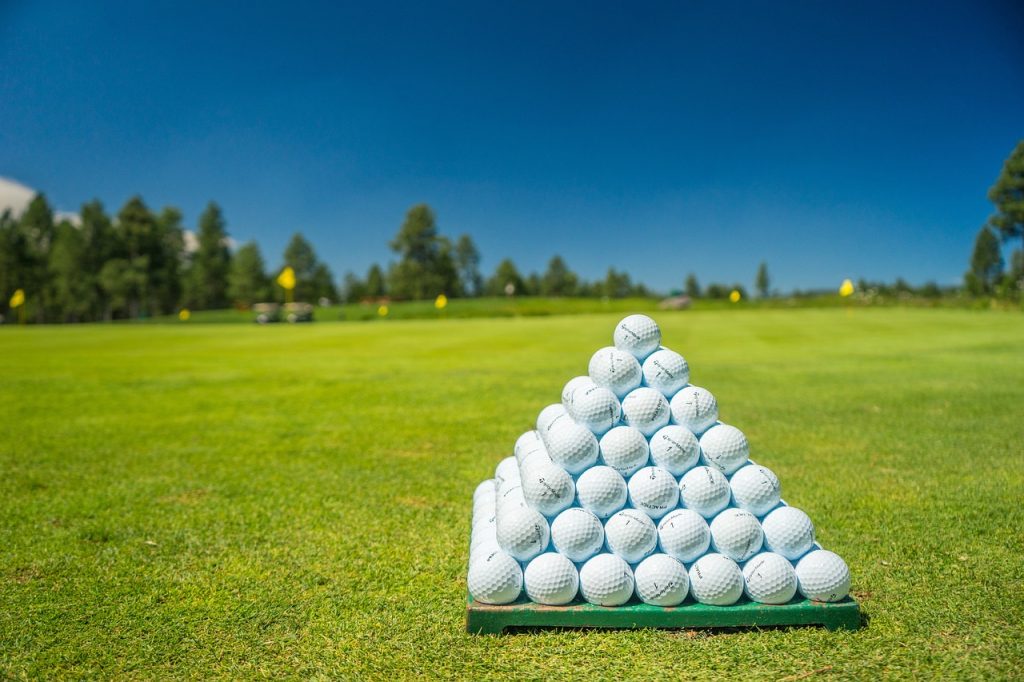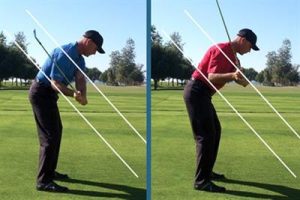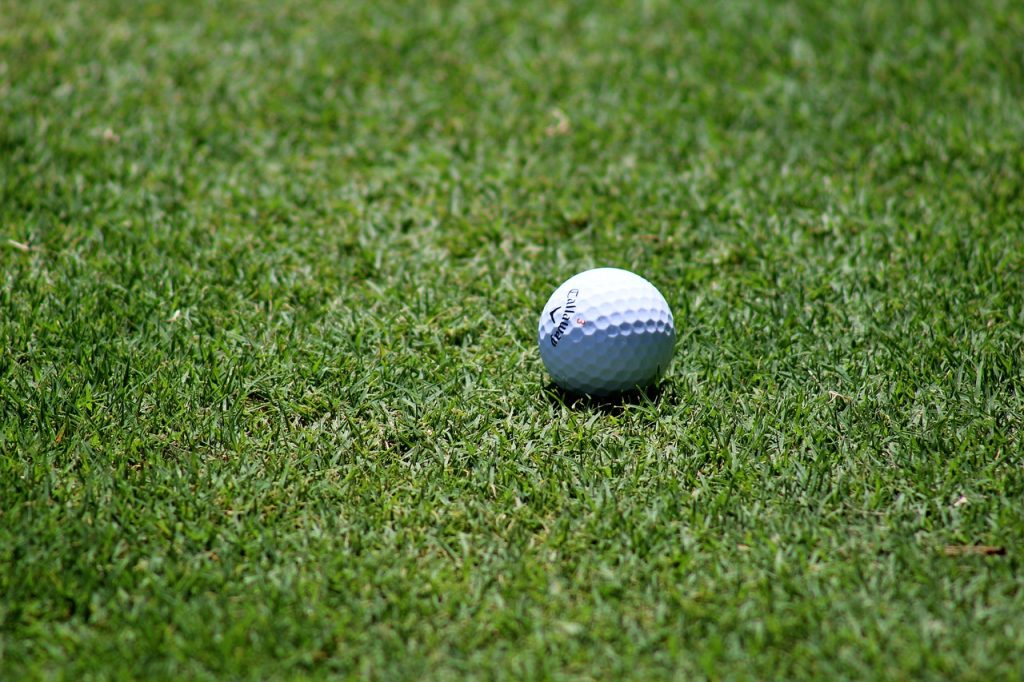Is your golf game plagued by an over the top swing? If you’re like many golfers, you may find that this particular swing fault is not only frustrating but also detrimental to your overall performance on the golf course. Addressing this issue requires a nuanced approach that encompasses understanding the mechanics of the swing, identifying symptoms, and deploying effective corrective measures.
Understanding the Over the Top Golf Swing
The over the top golf swing is a common flaw that adversely affects many golfers across skill levels. Essentially, this error occurs when the club is brought down from the outside-in, causing a variety of undesirable outcomes.
What is an Over the Top Golf Swing?
Primarily, an over the top swing refers to a downswing that deviates from the ideal plane, originating from an out-to-in path relative to the target line. This path typically results from improper positioning during the backswing or premature rotation of the shoulders.
Key Indicators
Identifying whether you have an over the top golf swing involves looking for consistent ball flight patterns and other physical indicators such as:
- Slicing the ball
When your ball curves severely from left to right (for right-handed golfers), it often suggests an outside-in swing path. - Pulling shots
Hitting the ball left of your target often indicates an over the top swing. - Poor contact
Hitting the ball off-center on the clubface or creating deep divots can also hint at this swing flaw.
The Mechanics Behind the Over the Top Swing
Understanding why you are swinging over the top is crucial for effectively addressing this issue. Various mechanical and positional errors can contribute to this problematic pattern.
Common Causes
There is no single reason why golfers develop an over the top swing. Instead, multiple factors often interplay:
| Cause | Description |
|---|---|
| Improper Grip | Holding the club too tightly can exacerbate an outside-in swing path. |
| Incorrect Setup | Misalignment of feet, hips, and shoulders can predispose you to this swing fault. |
| Early Shoulder Rotation | Premature rotation during the downswing can lead to an over the top move. |
| Lack of Hip Rotation | Neglecting to properly rotate the hips can force the upper body into the over the top motion. |
Biomechanical Factors
Understanding the mechanics that predispose you to an over the top swing involves delving into body movement patterns. The kinetic chain in a golf swing requires synchronized motion of various body parts. Errors in one part can disrupt the entire sequence, leading to compensatory movements such as an over the top downswing.

Practical Steps to Correct an Over the Top Swing
Correcting an over the top golf swing involves multiple steps, starting with evaluating your current swing and implementing corrective drills and strategies.
Swing Analysis
Before making any changes, it is vital to have a clear understanding of your existing swing. Here are some steps to follow:
- Use Video Technology: Recording your swing from different angles can provide immediate insights into your faults.
- Consult a Professional: A golf instructor can offer expert analysis and tailored advice.
- Self-Assessment: Once you have a visual understanding, identify key areas requiring improvement.
Drills to Correct an Over the Top Swing
Implementing specific drills can greatly assist in realigning your swing path and correcting the over the top fault.
Drill 1: The Inside Path Drill
This drill focuses on helping you swing from the inside-out, counteracting the outside-in habit.
- Setup a lined stick or club on the ground parallel to your target line.
- Place a second stick or club at a 45-degree angle inside the target line.
- Practice swings ensuring the clubhead follows the inside stick on the downswing.
Drill 2: The Seated Pivot Drill
This drill emphasizes coordinated upper and lower body movement, helping to align your downswing correctly.
- Sit on a bench or chair with your back straight and feet flat on the floor.
- Hold a golf club across your shoulders.
- Practice rotating your shoulders while keeping your lower body stationary. This drill helps in understanding how to rotate your upper body properly.
Drill 3: One-Handed Swing Drill
Focusing on one arm at a time can help correct muscle memory and the swing path.
- Grip the club with only your trailing hand.
- Make half-swings paying close attention to the path of the clubhead.
- Repeat with the leading hand to ensure balanced muscle memory.
Refining Your Setup and Alignment
A critical aspect of rectifying an over the top swing involves examining and adjusting your stance, grip, and overall alignment.
Proper Setup
Correcting your setup can preemptively address several factors contributing to an over the top swing.
- Alignment: Always align your feet, hips, and shoulders parallel to the target line.
- Grip: Ensure a relaxed but firm grip to avoid excessive tension.
- Posture: Maintain a balanced posture with the right amount of knee flex to promote dynamic stability during the swing.
Alignment Tools
Incorporating alignment tools into your practice can solidify your proper stance and setup.
| Tool | Purpose |
|---|---|
| Alignment Sticks | To ensure your feet, hips, and shoulders are parallel to the target line. |
| Mirrors | To visualize and correct your stance and posture during practice. |
| Training Aids | Devices like swing trainers can provide real-time feedback on swing path and alignment. |

Mental and Physical Conditioning
Both mental and physical aspects are pivotal in addressing and sustaining improvements in your golf swing.
Mental Strategies
The mental game of golf is often underrated but critically important. Techniques to improve mental focus can help in ingraining new swing mechanics.
- Visualize Success: Mentally rehearsing the correct swing can create stronger neural pathways for muscle memory.
- Stay Positive: Focus on gradual improvement rather than immediate perfection.
- Mindfulness Practices: Techniques such as deep breathing and meditation can help improve concentration.
Physical Conditioning
Physical conditioning tailors your body to execute the necessary movements smoothly and consistently.
Core Strengthening
A strong core is essential for maintaining balance and generating power in your swing.
| Exercise | Benefit |
|---|---|
| Planks | Improve core stability. |
| Russian Twists | Enhance rotational strength. |
| Medicine Ball Throws | Increase dynamic power and coordination. |
Flexibility Training
Incorporating flexibility exercises can help you achieve a fuller, more controlled swing.
| Exercise | Benefit |
|---|---|
| Hamstring Stretches | Improve lower body flexibility. |
| Shoulder Circles | Enhance upper body mobility. |
| Hip Flexor Stretches | Increase range of motion in the hips. |
Monitoring and Sustaining Progress
Once you have begun implementing changes, maintaining a consistent approach is crucial for long-term success.
Tracking Improvements
Keeping a record of your practice and performance can help you monitor progress.
- Swing Diary: Documenting your practice sessions and game performances can provide insights into what works and what needs further improvement.
- Apps and Software: Various golf-specific apps offer features to track and analyze your swing.
Regular Tune-Ups
Periodic assessments through video analysis and professional consultations can ensure that your swing remains on the correct path.
- Biannual Lessons: Seek professional advice at least twice a year to fine-tune mechanics.
- Self-Recording: Regularly record your swing to catch and correct small deviations early.

Common Pitfalls and How to Avoid Them
Despite best intentions and diligent practice, there are common pitfalls that can sabotage your efforts to correct an over the top swing.
Overthinking Techniques
Focusing too much on mechanics during your swings can hinder fluid motion and timing.
- Solution: Practice drills and techniques during training sessions but aim to clear your mind during actual play. Trust the muscle memory built through practice.
Neglecting Short Game and Putting
While driving accuracy is crucial, neglecting other aspects of your game can lead to an imbalanced skill set.
- Solution: Allocate practice time effectively, ensuring that you devote sufficient attention to all aspects of the game.
Ignoring Physical Fitness
A lack of physical conditioning may lead to an inability to perform the correct mechanics.
- Solution: Complement your golf practice with a consistent fitness routine focusing on core strength, flexibility, and overall conditioning.
Conclusion
Correcting an over the top golf swing is a multifaceted endeavor requiring an understanding of biomechanics, diligent practice, and mental and physical preparation. By following the outlined steps and consistently monitoring your progress, you can develop a more effective, accurate, and enjoyable swing. Remember that golf improvement is a journey, and patience, combined with consistent effort, will yield significant long-term results.

